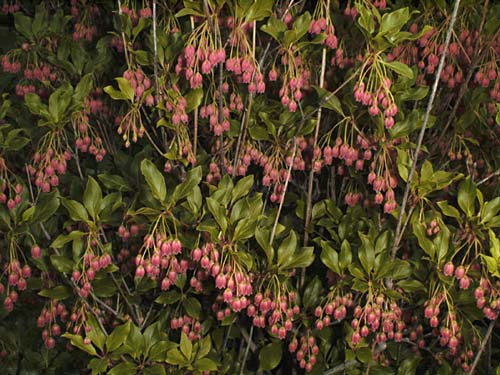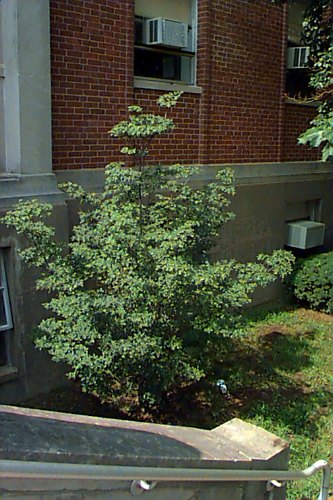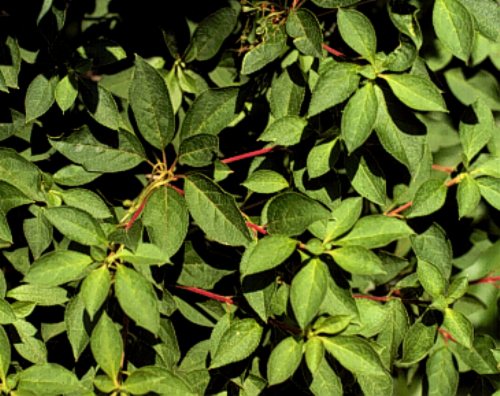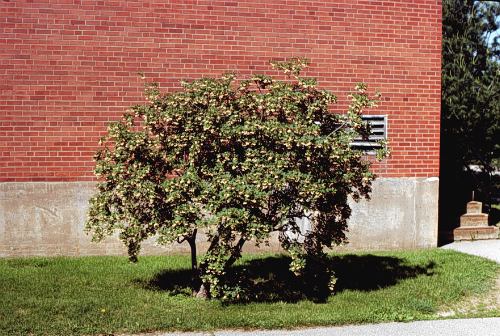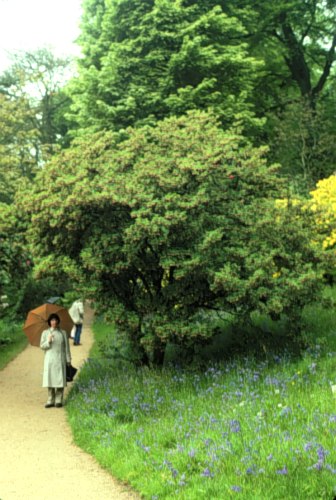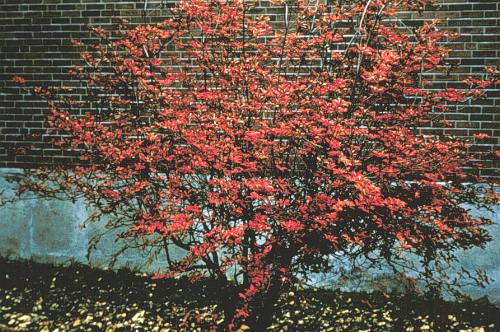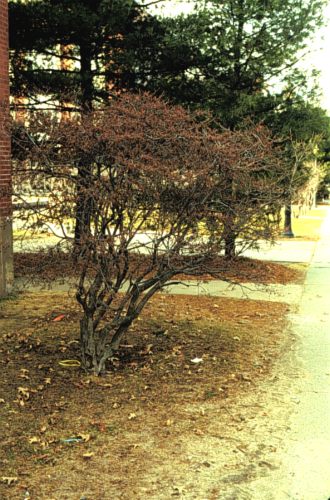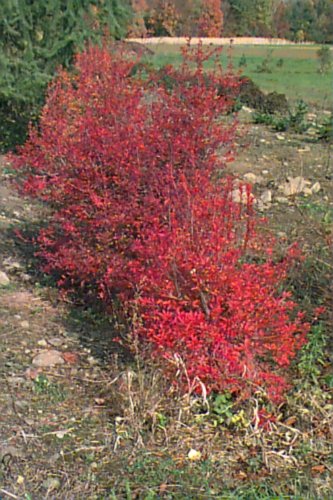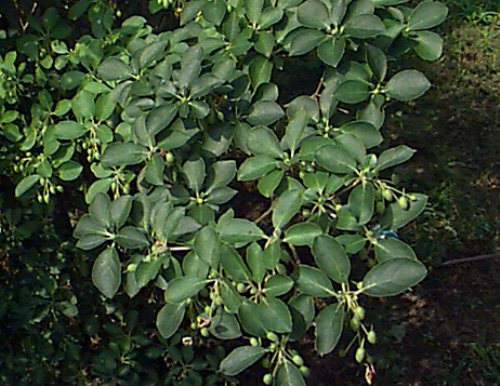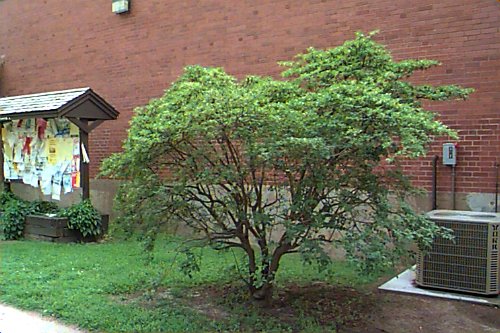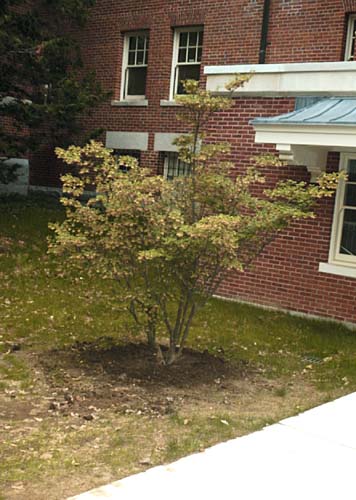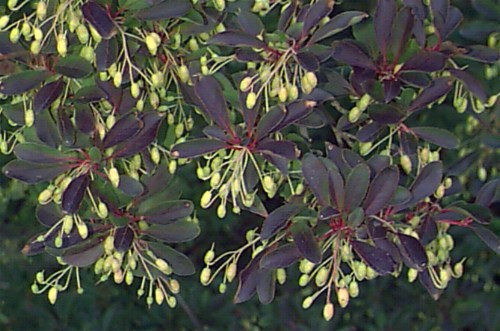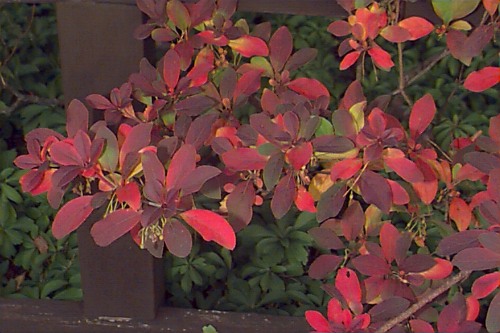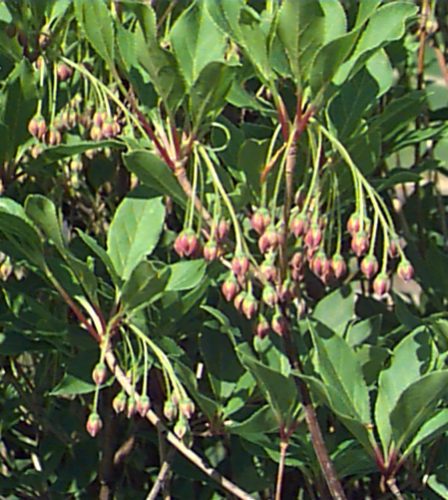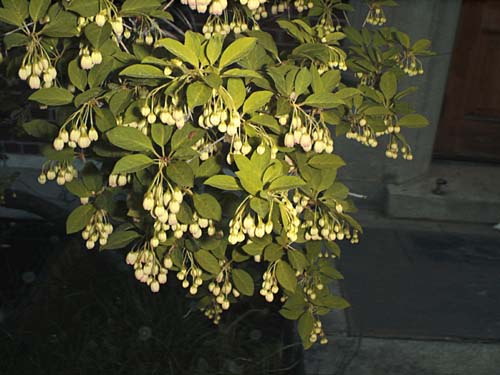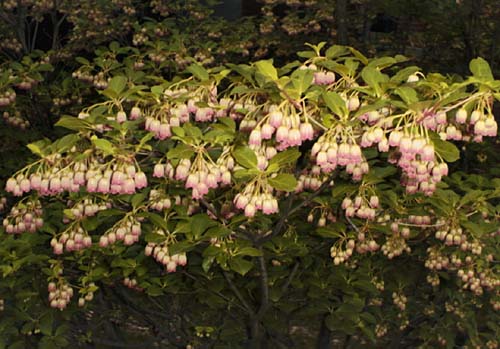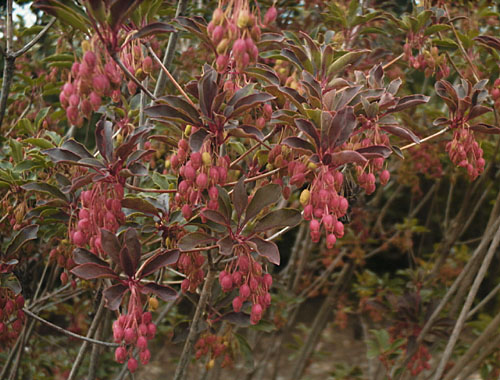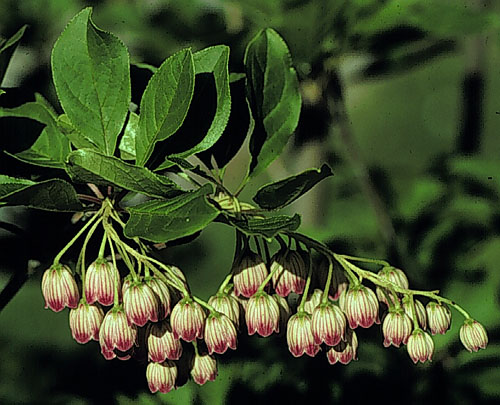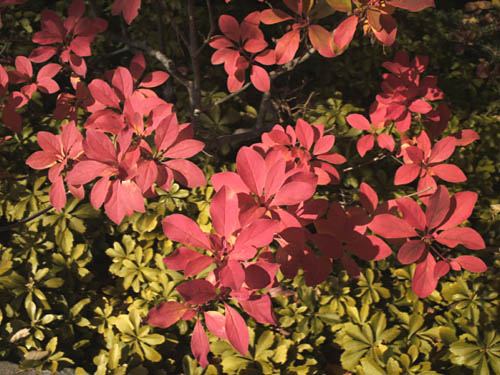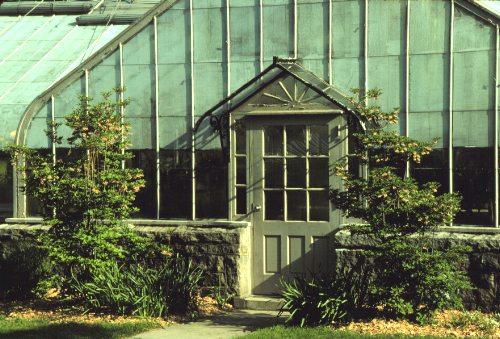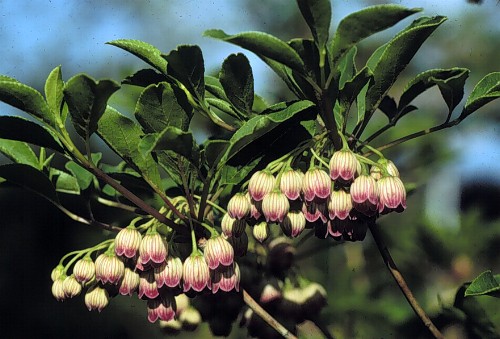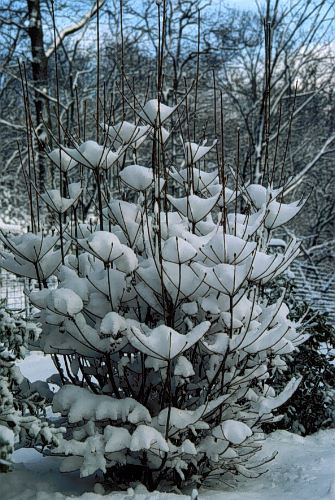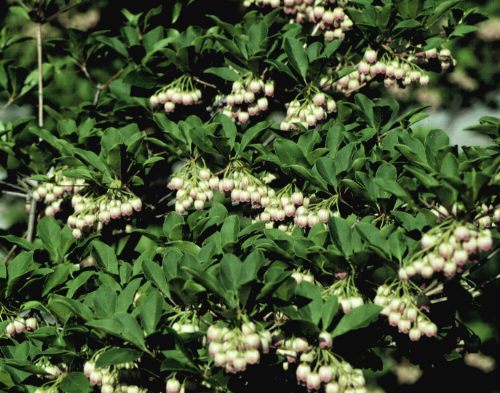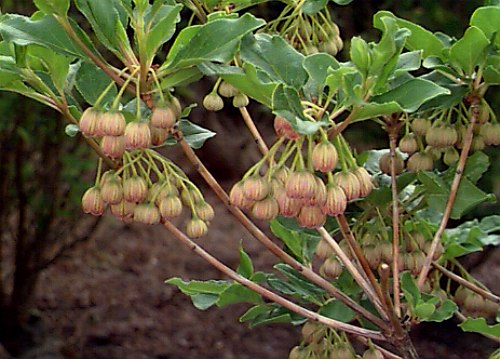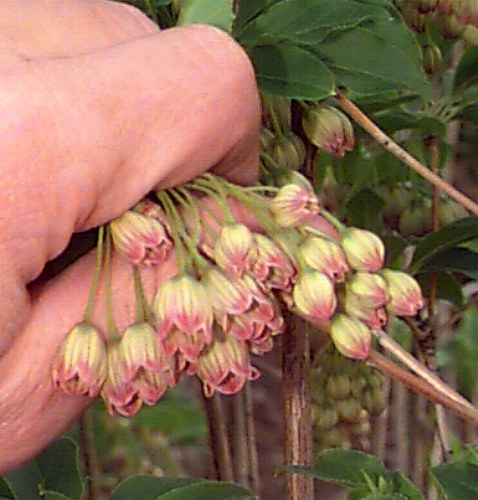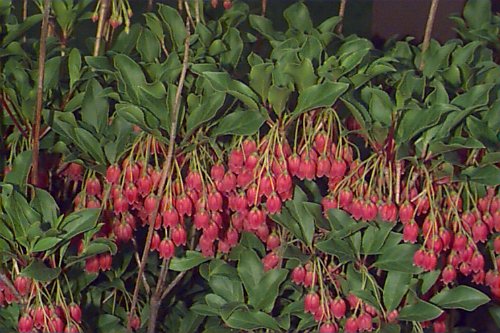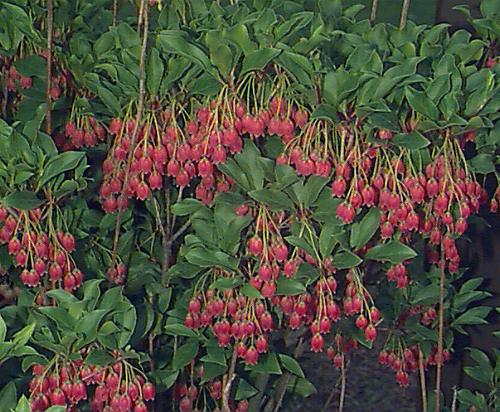Enkianthus campanulatus
Redvein Enkianthus
Ericaceae
ExpandHabitat
- native to Japan
- zone 5
Habit and Form
- an upright deciduous shrub
- 6' to 12' tall under most conditions
- usually 4' to 6' wide
- foliage is clustered at the tips of branches
- foliage often appears to be layered
- often somewhat open at the plant base
Summer Foliage
- alternate arrangement
- deciduous
- 1' to 3' long and 0.5" to 1" wide
- crowded in clusters at branch tips
- elliptical with bristly teeth on margin
- some scattered bristles on leaf surface
- medium green to bluish green
- red petioles
Autumn Foliage
- yellow, orange, or red
- quality of fall color varies with the individual
- selected clones should be used if good fall color desired
Flowers
- small yellowish flowers with red veins and markings
- bell-shaped, openings in May and early June
- relatively showy with heavy bloom
- flowers held in pendulous clusters
Fruit
- small capsule of no ornamental value
- turns brown in fall
Bark
- bark on new shoots somewhat reddish
- bark on older wood is gray-brown and smooth, for the most part
Culture
- prefers an acid, moist, cool soil
- partial shade to full sun
- avoid hot, dry sites
- transplant from container or B&B
- slow growing
Landscape Use
- specimen
- small groups
- can be trained into a small tree
- mixes well with other ericaceous plants
- most useful for flowers and fall color
- site where the flowers can be viewed at close range
Liabilities
- needs acidic cool, moist soil
- spider mites are problematic in hot locations
- seed-grown plants may not have red fall color
ID Features
- upright deciduous shrub; fairly narrow
- small bell-shaped yellowish flowers with red vein pattern; in pendulous clusters
- alternate leaf arrangement with leaves in clusters at branch tips
- leaves elliptical with bristles along margins
- layered branching pattern
Propagation
- by seed; very easy
- softwood cuttings and tissue culture for selections
Cultivars/Varieties
'Albiflorus' - A form with creamy white flowers that lack significant red markings. The plant is compact growing with reasonably good orange-red fall color
'Red Bells' - Probably the most common cultivar, this plant has flowers with a reddish edge. The fall color is consistently good and the growth habit is upright.
'Showy Lantern' - A new form selected at a Massachusetts nursery, this cultivar sports deep pink flowers and dense branching from the ground up. Summer foliage is dark green and the leaves turn scarlet come fall. A superior clone, but less hardy than the species.
'Sikokianus' (also seen listed as var. sikokianus and 'Siko-kianus') - A special flowering selection with maroon flower buds which open to reveal brick red flowers. Occasionally available from specialty nurseries.
'Variegata' (perhaps the same as 'Tokyo Masquerade') - This form has leaves edged with white that are held on reddish stems. It is rarely seen and probably less hardy than the species.
